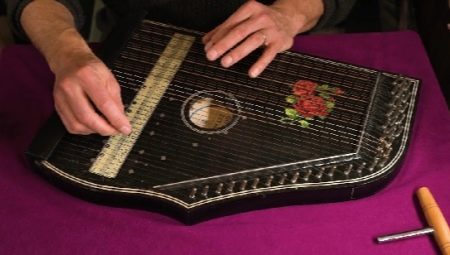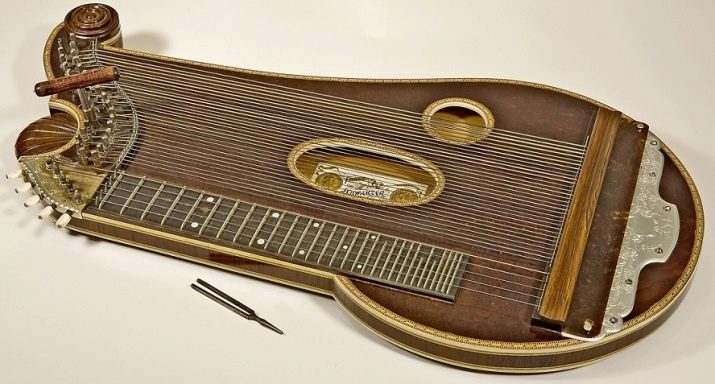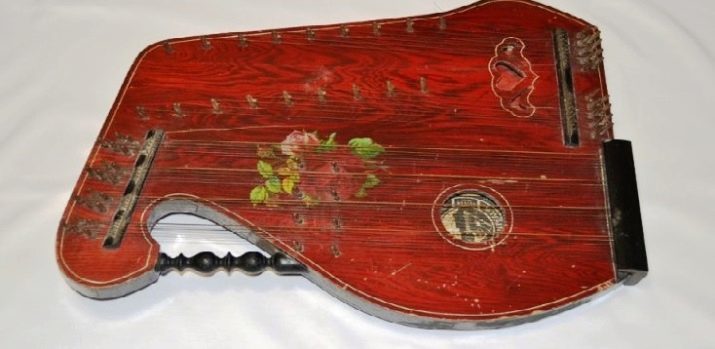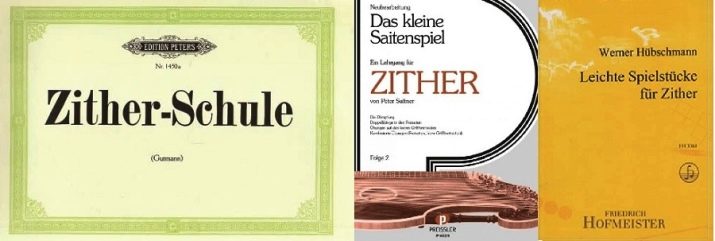Zither: description and technique of the game

One of the most interesting multi-stringed plucked musical instruments is the zither. Basically it is a solo instrument in orchestral groups.
History of appearance
It is believed that the ancestor of modern varieties of zither was a musical instrument called Scheitholz, which literally means "log" in German. It has been common among commoners in German-speaking rural areas since the Middle Ages. Scheitholz was considered by high society to be "despicable" musical instruments, like some others, invented by craftsmen from the common people (for example, bagpipes).
Over time, the forms and structure of the ancestor instrument changed and it received the name "zither" in the second half of the 18th century, when its body began to be made of glued wood in the form of a hollow flat box of various configurations. But the instrument remained mainly among rural musicians.

And only from the beginning of the 19th century began its nationwide distribution, including in cities, especially in Germany and Austria.... True, then the zither was used to perform only entertainment music.
At the end of the 19th century, a concert model of zither was developed, after which it began to appear in orchestral groups, solo concerts and original works were written for it.
The Russian musical community first saw and heard this musical instrument in their homeland in the second half of the 19th century. Here it also received its distribution until the 1917 revolution. Under the young Soviet regime, all the efforts of musicians who fell in love with zither, to develop an interest in it, collapsed.Former "despicable" (read "folk") musical instrument, outwardly reminiscent of a gusli, high ranks from culture paradoxically considered alien to the Soviet people.

Description
Zither belongs to a group of stringed musical instruments called chordophones. This class includes all instruments whose sound source is an oscillating string. Citra, in turn, leads a group called the "type of zither", which includes not only citric instruments, but also string-keyboard instruments, for example, such as:
- harpsichord;
- spinet with plucked sound production;
- piano;
- percussion clavichord.
All zithers and similar instruments (citric: gusli, kanun, Chinese qin, Japanese koto and others) necessarily have a resonator hole on the body to amplify the sound, as well as strings stretched over the top soundboard in very different quantities. The zither itself can have up to 45 strings stretched, although the most common model is an instrument with 35 or 36 strings.

The strings in the concert model are arranged as follows:
- melodic strings above the neck - 4-6 pcs .;
- accompanying strings above the deck - 12 pcs .;
- bass over the deck - 12 pcs.;
- contrabass over the deck - 5-6 pcs.
Among the varieties of zithers, the treble zither, the zither bass and the concert model stand out. The total sound range of this group of instruments reaches almost 6 octaves (from the G note of the counter octave to the D note of the fourth octave).
Instrument device
As already noted, the body of a zither can have different shapes, but all of their variants are usually asymmetric (irregular)... Examples of the shape of the body are trapezoidal, pterygoid, pear-shaped. The body of the zither is quite flat in thickness, except for bass models, which require strong sounds. There is a lower and upper deck, fastened with a shell - the side that determines the thickness of the body. The material of the body is wood, which can be linden, maple, alder and other tree species with good acoustic characteristics.
A resonator hole is made in the top deck, there may be two of them. Metal strings are stretched over the top deck. For melodic strings, sometimes a fretboard is arranged on the right (under the fingers of the right hand), but more often on the side of the instrument closest to the musician.
The strings on the fretboard are tuned with the tuning pegs, and the choruses (those above the soundboard) are tuned with a special key.
If you hear a composition performed on a zither on the radio (without seeing what they are playing), you might think that at least 2 musical instruments sound, for example, an acoustic guitar with metal strings and something similar to a harp or gusli. In fact, these magic sounds are created by one musician (citrist), whose instrument is zither.

The timbre of each model of this musical product depends on the size of the cabinet, the quality of the wood and strings. Some connoisseurs of sound parameters note some monotony (monotony) of citric timbres. But the chord sounds extracted from the static choral strings enchant the listener, they are so juicy and tender.
The most common tunings for modern instruments are:
- full venetian for models up to 38 strings;
- separate: Munich for accompaniment and Venetian for fret strings (fretboard).
Convenient for playing the zither keys and settings: up to 4 alteration signs in the key (flats or sharps).
It should be added to everything that there are models on which you need to play with a bow. They are called that - bow zithers.
How to play?
The zither is played by placing the instrument either on the table in front of you or on your lap. The game is played by plucking the strings with the fingers of both hands. The thumb of the right hand reproduces a melody on the neck, and he does it with a plectrum (a ring with a marigold) put on it. The other two or three fingers of the right hand, on the choir strings located a little further, perform the accompaniment of the sounding melody.
The fingers of the left hand are preoccupied with pinching the strings at the frets of the fretboard, much like playing a guitar. In addition, they can lead the accompaniment in moments when it is not necessary to clamp the strings on the instrument's neck (for example, in cases of long notes in a melody played on open strings, or during pauses in the melodic line of a composition).
Professional citrists often use the fingers of one right hand to manipulate a melodic voice, completely shifting the accompaniment to the left hand, but beginners will not be able to do this technique. A lot will need to learn and practice for hours.
For beginners, there are simple versions of the instrument that have fewer strings both above the soundboard and on the fretboard. For example, Salzburg simplified models.

On a regular zither, the neck is supplied with five or six melodic strings, and on a lightweight model there are no more than four. The accompanying strings are also half as many - 12 or even less.
The easiest way to learn and play is the now-fashioned zither keyboard model. The keys in it replace the melodic part of the instrument. In this case, it is easy to lead the melody with only one hand, pressing the keys with your fingers, like on a piano, while the other hand will play harmonic accompaniment on the choir strings, which remain unchanged.
It should be borne in mind that notes for the described instrument are written simultaneously in two keys:
- violin for melodic voice (key "salt");
- bass for accompaniment (key "F").
That is exactly the same as for the piano. The pitch of the sounds corresponds to the spelling, except for the bass instrument (for which the recording is carried out one fourth above the actual sound).
There are self-instruction manuals and schools for independent learning to play the zither, but only, unfortunately, foreign publishing houses (mostly German). Whether there is anything like this in Russian is unknown. Here are examples of the textbooks available on the Web (available through amazon.de):










Thanks.